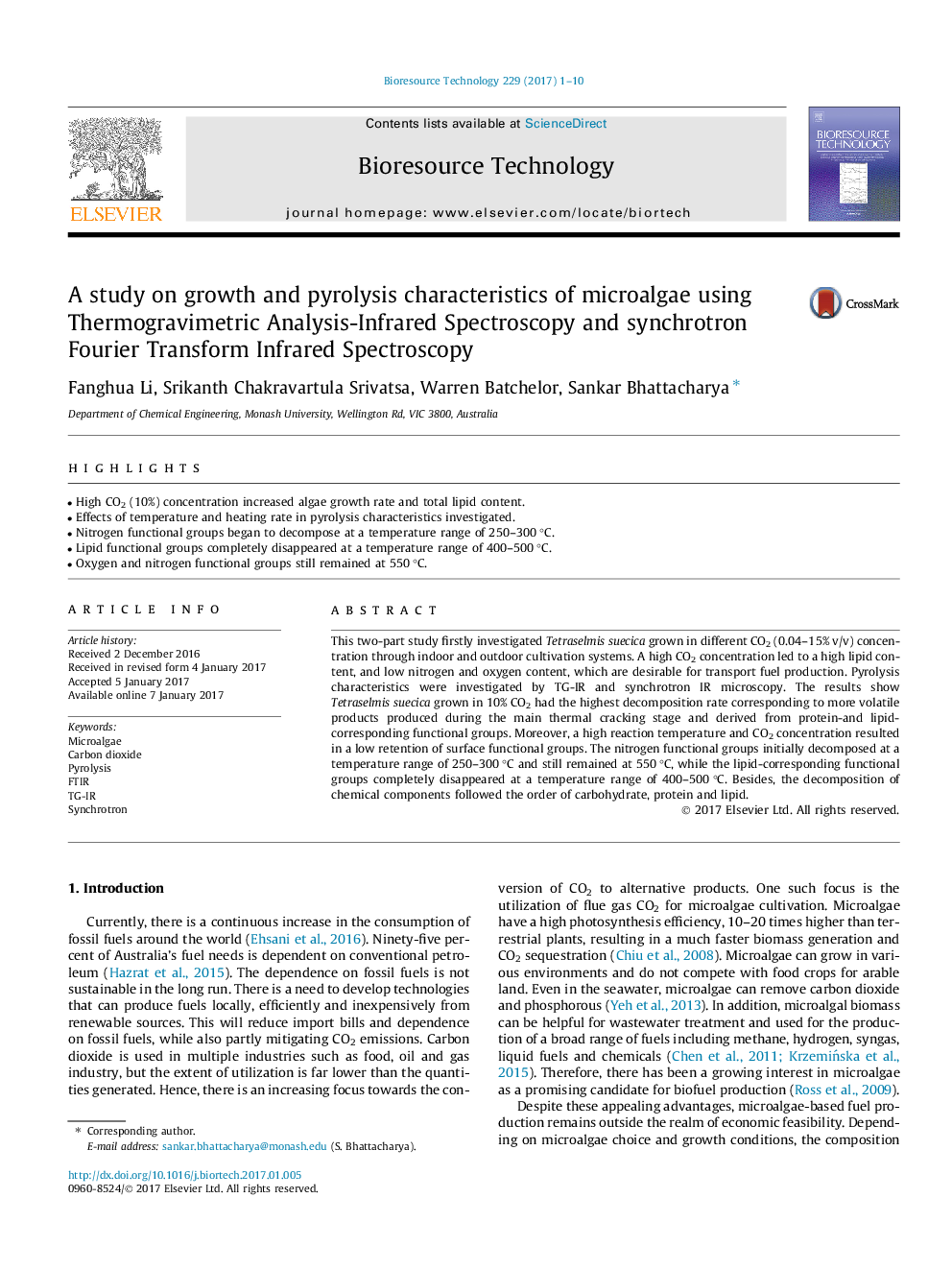| Article ID | Journal | Published Year | Pages | File Type |
|---|---|---|---|---|
| 4997621 | Bioresource Technology | 2017 | 10 Pages |
Abstract
This two-part study firstly investigated Tetraselmis suecica grown in different CO2 (0.04-15% v/v) concentration through indoor and outdoor cultivation systems. A high CO2 concentration led to a high lipid content, and low nitrogen and oxygen content, which are desirable for transport fuel production. Pyrolysis characteristics were investigated by TG-IR and synchrotron IR microscopy. The results show Tetraselmis suecica grown in 10% CO2 had the highest decomposition rate corresponding to more volatile products produced during the main thermal cracking stage and derived from protein-and lipid-corresponding functional groups. Moreover, a high reaction temperature and CO2 concentration resulted in a low retention of surface functional groups. The nitrogen functional groups initially decomposed at a temperature range of 250-300 °C and still remained at 550 °C, while the lipid-corresponding functional groups completely disappeared at a temperature range of 400-500 °C. Besides, the decomposition of chemical components followed the order of carbohydrate, protein and lipid.
Related Topics
Physical Sciences and Engineering
Chemical Engineering
Process Chemistry and Technology
Authors
Fanghua Li, Srikanth Chakravartula Srivatsa, Warren Batchelor, Sankar Bhattacharya,
